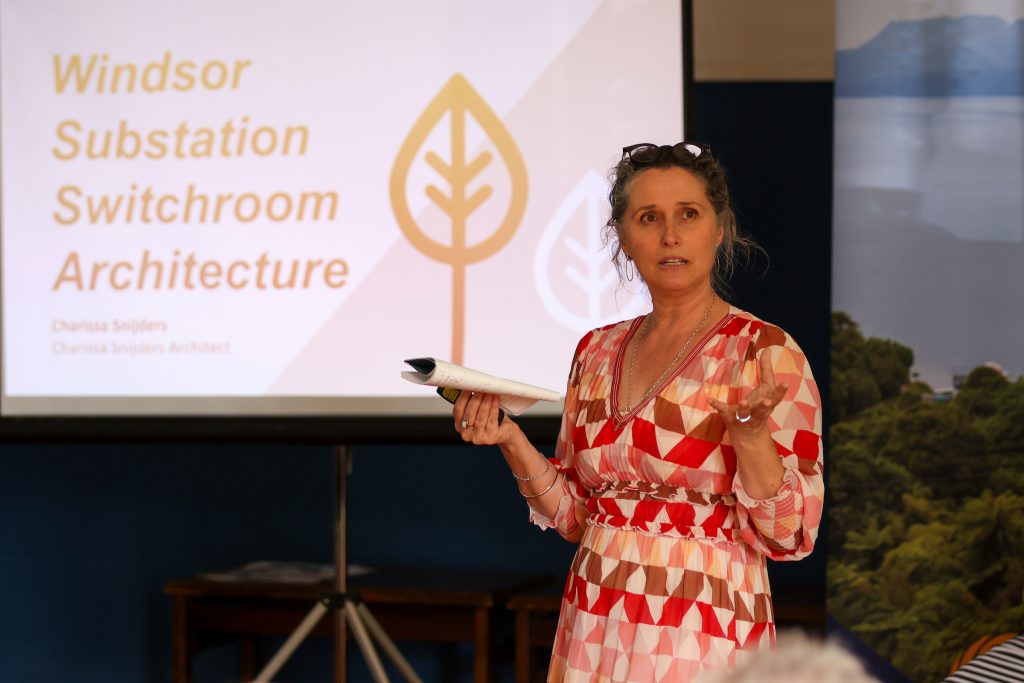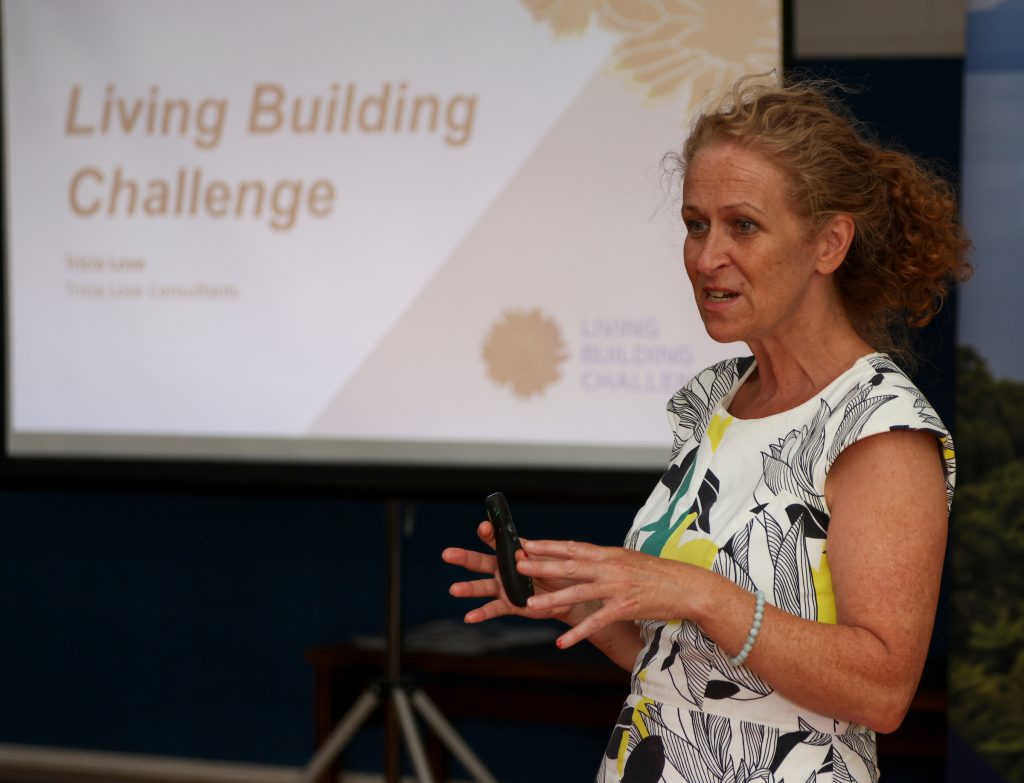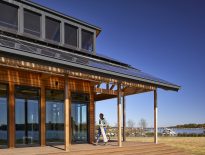Infrastructure Buildings for the Living Future
Unison Networks’ Windsor Substation proves the possible—Petal Certification for landscape and infrastructure projects.
Living Building and Petal Certification are often sought by environmental centers and office buildings, but the program is organized for a wide range of building and project types— including industrial and infrastructure buildings and landscapes. Last fall, the New Zealand energy company Unison announced that its Windsor Substation switchroom had become the world’s first landscape and infrastructure project to receive Living Building Challenge 4.0 Petal Certification through the International Living Future Institute.

The substation is a new structure on an existing substation site in Hastings, New Zealand, that originally targeted Core certification but achieved the Energy Petal. The project forms a new blueprint for sustainable modular design and construction of future substations on Unison’s electricity distribution network that extends to the regions of Hawkes Bay, Rotorua, and Taupō in New Zealand’s North Island. In early 2023, when the region suffered a major cyclone, the substation stayed up and running to provide its community with power during the storm. It was designed and built to reduce its carbon footprint and utilize eco-friendly materials. It harvests its own electricity and captures and stores water.
“We knew we needed to do an upgrade, and we were looking for ways that would be low cost, modular, and sustainable,” said Jason Hartley, Risk Advisor with Unison. “We looked at a range of certification systems and became interested in the Living Building approach, which seemed ambitious and holistic.”
Aryero Kothroulas, Group Risk and Sustainability Manager with Unison, explained: “A substation is an important building for our business but also for our community. It is critical for resilience. We wanted to show what was possible with this typology. We wanted to create something that can withstand earthquakes, is beautiful, and gives back to the community.”

When Unison engaged Tricia Love Consultants and architect Charissa Snijders, the Living Building framework idea went into high gear. The team started with the idea of aiming for Zero Energy, but soon, the momentum of what was possible grew. “We decided that we could go further,” said Hartley. “We decided to push for Petal certification. We found that the structure of the [LBC] challenge was such that it helped us continue to push the boundaries.”
We decided to push for Petal certification. We found that the structure of the [LBC] challenge was such that it helped us continue to push the boundaries.

It was a first, however, for a small utility building — a piece of energy infrastructure — to go through the Living Building process. It was completely new for the team and the standard. “New things can be hard,” said Kothroulas. “Change is often met with some resistance, and we introduced a modular design along with new approaches to energy, water, and materials. The whole team had to help stakeholders and suppliers understand what we were doing, but once they could see what was possible, they got on board because they could see how we could provide more benefits to more people. We could see the project ripple throughout the supplier network and the community.”

Concrete block construction was the norm for this building type. The team’s desire to use cross-laminated timber (CLT) instead of concrete and other materials presented some specific challenges in procuring FSC wood for their remote region and finding a resin coat that met safety standards and was not on the Red List and contributed to the small embodied carbon footprint that the team was targeting. When they sourced the CLT, no CLT was being produced in New Zealand (they got theirs from Australia), but that has since changed.
“We began to understand our little project as something that could make a shift in the market,” Kothroulas said. “We have released the design of the building publicly. We want people to understand what we did and how we did it.” The company has had many people touring the project for an up-close look, too. “We are incredibly proud to have shown proof of concept and helped build a market.” And the transformation is not just within the industry and the trades: The Community Day tour and information event was well attended, opening pathways for how members of the public understands buildings and infrastructure in their neighborhoods.

The ripple effects at Unison are quite evident: The team is already working on other substations and applying what they learned about modular construction, resilience, waste, energy, CLT, and making sure that the designs are supportive to the community. And procurement policies at Unison have shifted, too – these now include specifying FSC wood for power poles, for example. “Achieving Petal Certification opened our eyes and has made us strive even harder for sustainability,” said Hartley.
“Achieving Petal Certification opened our eyes and has made us strive even harder for sustainability,” said Hartley.
For more details about this project and the team, see the ILFI Case Study. You can register to download the blueprints for the project here on the Unison website.
Cover photo courtesy Unison Networks.
Your donation supports community impact
Do you want to be part of making lasting change? Around the world, there is a community of people working towards a living future every day. In ways great and small, they are changing minds, overcoming obstacles, and bringing ambitious projects to life. Individually, they cause ripples that show what’s possible. Collectively, they envision the regenerative future that we all want. Will you join us in this transformative work? Your donation to the International Living Future Institute equips us to assist this community with programs, technical support, events, education, and more. Your donation will help us realize the possible together.


